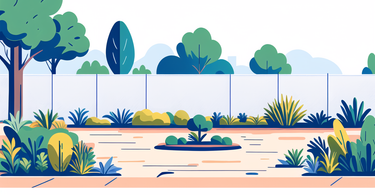Understanding Composite Fencing: Materials and Durability
What Is Composite Fencing?
Composite fencing is a modern alternative to traditional wood fences. It's made from a mix of recycled wood fibers and plastic. This blend creates a strong, durable material that looks like wood but lasts much longer. Composite fence pickets are resistant to rot, insects, and weather damage. They don't splinter or warp like wood does. This makes them a safe choice for families with kids and pets. Composite fencing comes in many styles and colors. It can mimic the look of wood or have its own unique appearance. The material is eco-friendly, using recycled materials in its production.

The Science Behind Composite Fencing Durability
The durability of composite fencing comes from its unique composition. The wood fibers provide strength and a natural look. The plastic component adds weather resistance and prevents moisture absorption. This combination creates a material that's stronger than wood alone. It doesn't rot or decay like traditional wood fences. The manufacturing process also includes UV stabilizers. These protect the fence from sun damage and color fading. Some brands add extra compounds to resist mold and mildew growth. The result is a fence that can withstand harsh weather conditions for many years.
Comparing Composite Fencing Longevity with Traditional Materials
When it comes to longevity, composite fencing outperforms traditional materials. Wood fences typically last 10-15 years with proper care. Composite fences can last 20-30 years or more. They don't require annual staining or sealing like wood does. Metal fences can rust over time, but composite fences don't have this issue. Vinyl fences can become brittle in extreme temperatures. Composite fencing maintains its integrity in hot and cold weather. While the upfront cost may be higher, the long-term value of composite fencing is clear. It requires less replacement and maintenance over its lifetime.
The Aesthetic Appeal of Composite Fencing
Innovative Designs in Composite Fencing
Composite fencing offers a wide range of design options. Manufacturers create styles that mimic various wood grains and textures. Some designs replicate the look of cedar, pine, or tropical hardwoods. Others have a more modern, sleek appearance. Innovative patterns and textures add visual interest to fence panels. Some brands offer two-tone designs for a unique look. Composite fencing can also incorporate decorative elements like post caps and lattice tops. These design options allow homeowners to customize their fences to match their home's style.

How Composite Fencing Enhances Property Value
Adding a composite fence can boost your property's value in several ways. First, it improves curb appeal with its attractive, well-maintained appearance. This can make a home more appealing to potential buyers. The long lifespan of composite fencing is also attractive to homebuyers. They know they won't need to replace the fence soon after purchase. The low maintenance requirements are another selling point. New homeowners appreciate not having to spend time and money on fence upkeep. A well-chosen composite fence can complement the home's architecture and landscaping. This creates a cohesive, polished look that enhances overall property value.
The Role of Color and Texture in Choosing Composite Fencing
Color and texture play a crucial role in selecting composite fencing. Most brands offer a range of colors, from natural wood tones to bold hues. Light colors can make a small yard feel more spacious. Dark colors create a sense of privacy and elegance. Some homeowners choose colors that match or complement their home's exterior. Texture options range from smooth finishes to realistic wood grain patterns. The right texture can enhance the fence's natural look or create a modern aesthetic. Some composite fences even offer reversible boards with different textures on each side. This allows for easy style changes in the future.
Installation and Maintenance: The Easy Choice for Homeowners
The Installation Process of Composite Fencing
Installing composite fencing is straightforward, making it a popular choice for DIY enthusiasts. The process starts with planning and marking the fence line. Next, post holes are dug and filled with concrete to secure the fence posts. Composite fence posts are then installed, followed by the horizontal rails. Finally, the composite fence pickets are attached to the rails. Many composite fencing systems use a tongue-and-groove design for easy assembly. Some brands offer pre-assembled panels for even quicker installation. Professional fence install services are also available for those who prefer expert help.

Low Maintenance Requirements for Composite Fences
One of the biggest advantages of composite fencing is its low maintenance needs. Unlike wood fences, composite fences don't require annual staining or sealing. They resist fading, so the color stays vibrant for years. Cleaning is simple – a quick spray with a garden hose is often enough to remove dirt. For tougher stains, mild soap and water can be used. Composite fences don't splinter or crack, reducing the need for repairs. They also resist insect damage, eliminating the need for pest treatments. This low maintenance aspect saves homeowners time and money over the fence's lifetime.
Why Composite Fencing Is the Smart Choice for Busy Homeowners
Composite fencing is an ideal solution for busy homeowners who want a beautiful, durable fence without the upkeep. Its long lifespan means less frequent replacement, saving time and money in the long run. The low maintenance requirements free up weekends that would otherwise be spent on fence care. Composite fences maintain their appearance year after year with minimal effort. This is especially valuable for those with hectic schedules or who travel frequently. The durability of composite fencing also provides peace of mind during severe weather events. Homeowners can trust that their fence will stand strong, protecting their property without constant worry or repair.
